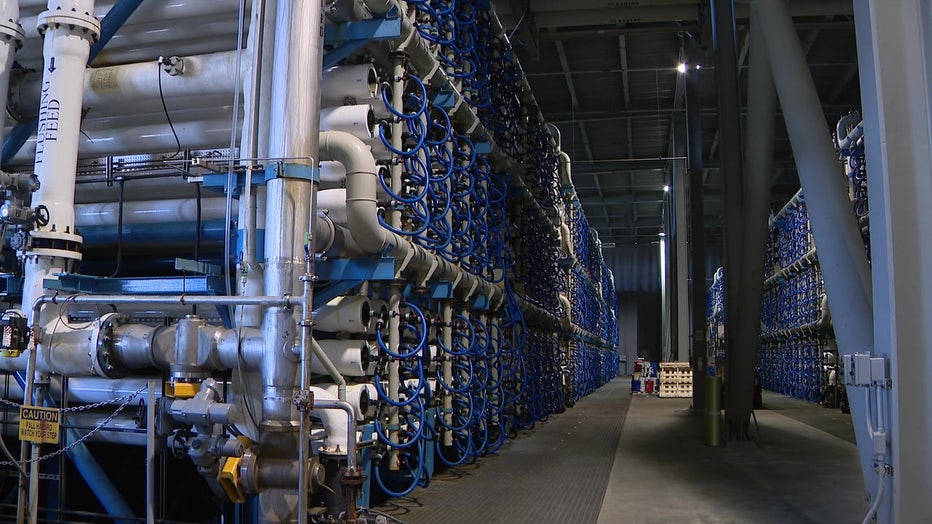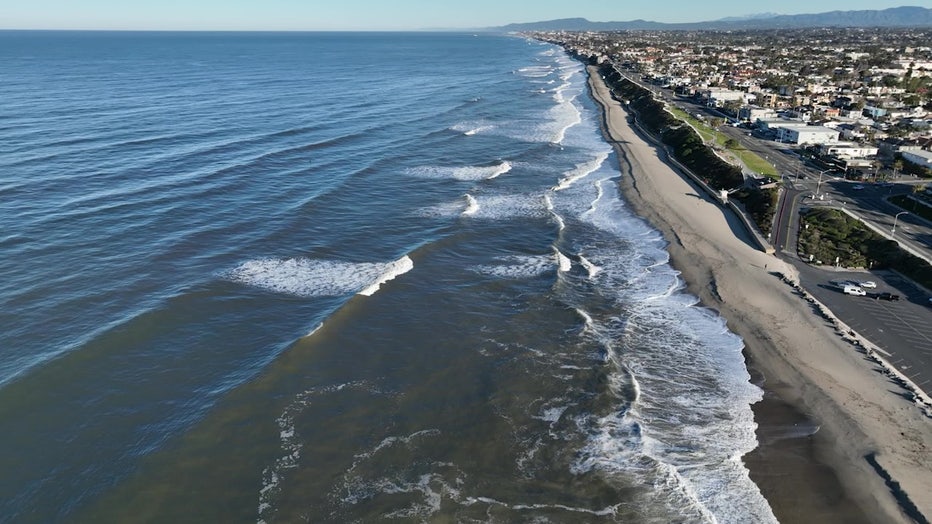As Arizona looks to desalination as a drought solution, questions mount over its feasibility for the state

Will desalination relieve our water woes?
It's no secret that Arizona, along with other states in the Southwest, are dealing with a megadrought that has also resulted in a water crisis. In California's San Diego County, officials are relying on desalination, or the transformation of saltwater into fresh water, as a way to satisfy a portion of the county's water needs. As Arizona officials take a look at desalination, FOX 10's Steve Nielsen spoke with experts on whether it's feasible for the Grand Canyon State, a state that has no access to the ocean.
SAN DIEGO - While Arizona received more rain and snow in recent months, a wet winter will not save the state from the decades-long mega-drought that is gripping the region.
Water officials have worked on finding unique solutions, including desalination.
Read More: What you should know about desalination
Desalination has been seen by some, including former Governor Doug Ducey, as an answer to Arizona's ongoing water crisis.
"Instead of just talking about desalination – the technology that made Israel the world’s water superpower – how about we pave the way to make it actually happen?" said former Gov. Ducey, during his final State of the State Address in 2022.
The Arizona Water Infrastructure Finance Authority has also proposed a $5.5 Billion plan to build a desalination plant in Mexico's Rocky Point and pipe the water to Phoenix.
However, with a price tag in the billions, international border issues, and massive environmental questions, we are taking a closer look at the desalination process, and see if this method of turning saltwater into freshwater is even feasible for a landlocked state like Arizona.
In California, desalination is already a reality

Interior of the desalination plant in Carlsbad, California.
For thousands of miles, waves from the Pacific Ocean crash on sandy shores in California.
In Carlsbad, Calif., a desalination plant was built to turn ocean water into drinking water, and the plant is the largest of its kind in the Western Hemisphere.
Officials with Poseidon, the company that runs the plant, say they can make 54 million gallons (about 204.41 million liters) of drinking water every day. The plant consumes water that flows past the jetties, and then it goes through a 72-inch pipe.
Before salt is removed, the water is first cleaned through layers of filters.
"Anthracite, sand and gravel," said Michelle Peters with Poseidon.
Peters says this first step is basically like a Brita filter, except it's ocean-sized.
"Simple technology, relatively speaking but very effective," said Peters.
After the gunk is removed, the water is split, with half of it going to desalination. (we'll come back to where the other half goes to later on)
The water headed for desalination then goes through a reverse osmosis process, where water pressurized to 1,000 PSI is forced through a tightly-wound polymer layer with microscopic holes that blocks salt particles.

Filters used to remove salt from saltwater, thereby turning the saltwater into freshwater.
At the end of the process is clean drinking water.
"A little bit of magic," said Jeremy Crutchfield with the San Diego County Water Authority. "A little bit of magic."
Desalination not without challenges, however

Exterior of the desalination plant in Carlsbad, California.
The plant might be massive, but in San Diego County, only 10% of the county's water is desalinated.
"We can't rely on just one option," said Peters. "We need to have other options."
It also took nearly two decades before the plant created any drinking water, according to officials with the San Diego County Water Authority.
"The permitting, the regulatory requirements here, took a long time to get through that process," said Crutchfield.
Crutchfield said, however, that everyone was on board, from residents to the politicians.
"It really is incredible. We have the largest supply of water in the world right in our backyard. Being able to access it and turn it into drinking water to our residents, and bring that resilient,drought-proof water to our region has been a very important part of our water diversification strategy in San Diego," said Crutchfield.
Water magic may be hard to recreate in Arizona

California Coastline
Desalination, for all the benefits it brought to San Diego County, might be hard to recreate elsewhere.
For Arizona, negotiations and planning may take years, regardless of where the plant is slated to be built, and hundreds of miles of pipelines would have to be laid, which translates to higher costs.
"Is it realistic to think of this plant, a similar one like this in California having a pipeline to Phoenix?" we asked Peters.
"Having a pipeline that's laid hundreds of miles is not an easy task, by any means," Peters replied. "But in terms of evaluating potential options, it has to be on the table in terms of new water supply sources. Again, what the feasibility is for it, it would require a lot of folks at the table, and negotiations to figure out what the right answer is."
"The San Diego story can really help others who are really going through a water supply challenge," said Crutchfield. "For us, it was all tools in the toolbox. It wasn't just a silver bullet."
If officials opt to build the plant in Mexico, officials with that country would need to be onboard.
So far, Mexican officials do not appear to be on board with such plans.
Some environmental experts, like Natalie Koch, are skeptical of such plans being feasible for Arizona.
"If the question is how do we sustain Arizona's current water use, desalination absolutely cannot do that," said Koch, a native Arizonan who is now an environmental researcher at Syracuse University.
Koch currently lives in the Middle East, where a large portion of drinking water comes from desalination. Kock said that comes down to power.
"They're able to do this because they have free power, basically, because they're all government-controlled, government-owned facilities. Free energy and cheap to do that," said Koch. "The United States doesn't have access to that."
We mentioned earlier about how half the water taken in at the desalination plant in Carlsbad was set aside. That's because of power. According to Poseidon officials, they take the remaining brine from the desalinated water that is still extremely pressurized and force it into the unpressurized, stored saltwater. The pressure transfer creates 46% of the power for the plant.
Even at that, it still requires massive energy, and Koch is not convinced it is sustainable on a larger scale.
"If you desalinate enough seawater, if you do enough, if you build enough technology, sure you can. You can engineer water solutions to do lots of things, but that doesn't mean that Arizona and the state and the country even has the resources to build these crazy water infrastructures that would keep Arizona going at the rate that it is," said Koch.
Not everyone is skeptical about desalination for Arizona. We asked Crutchfield if Arizona can have some of its water come from desalination.
"There's always a way," said Crutchfield. "Engineers can do a lot of things, so yeah, I think it's something that could be evaluated for inland areas."

